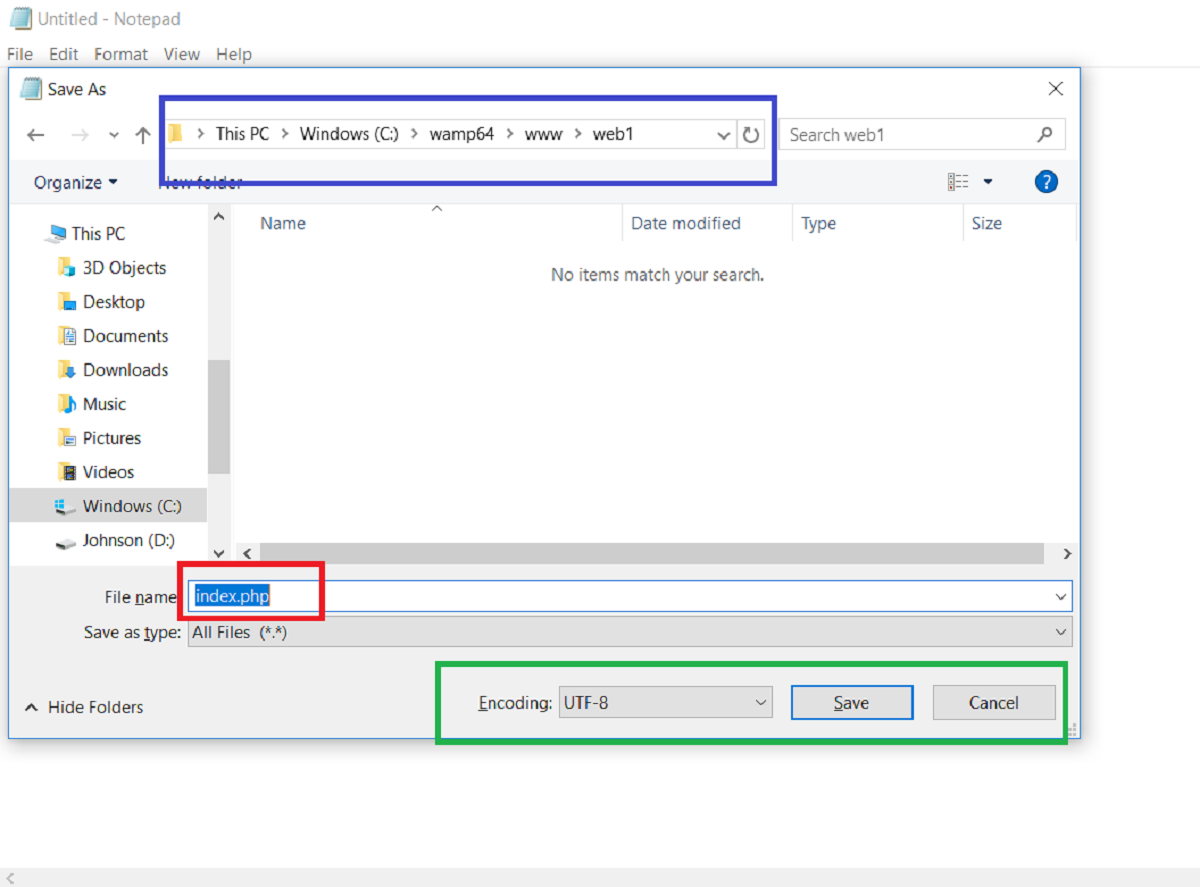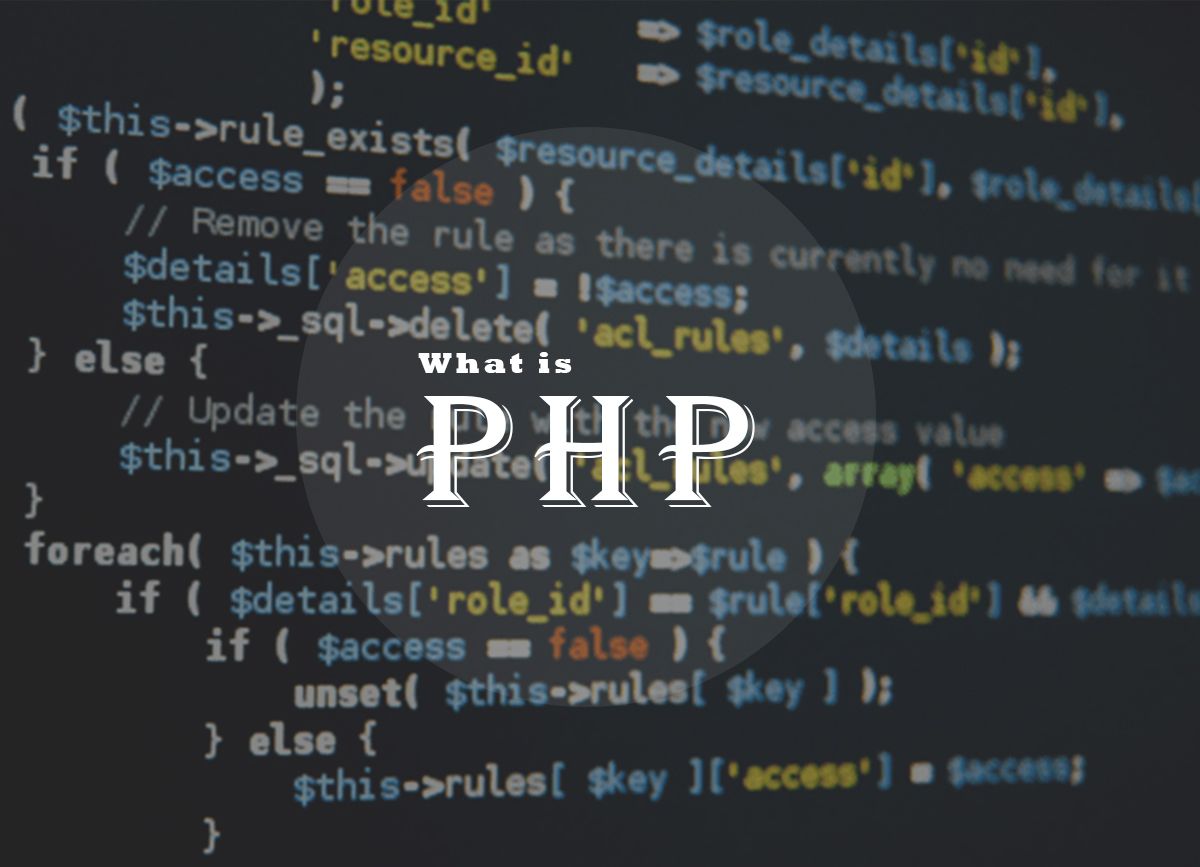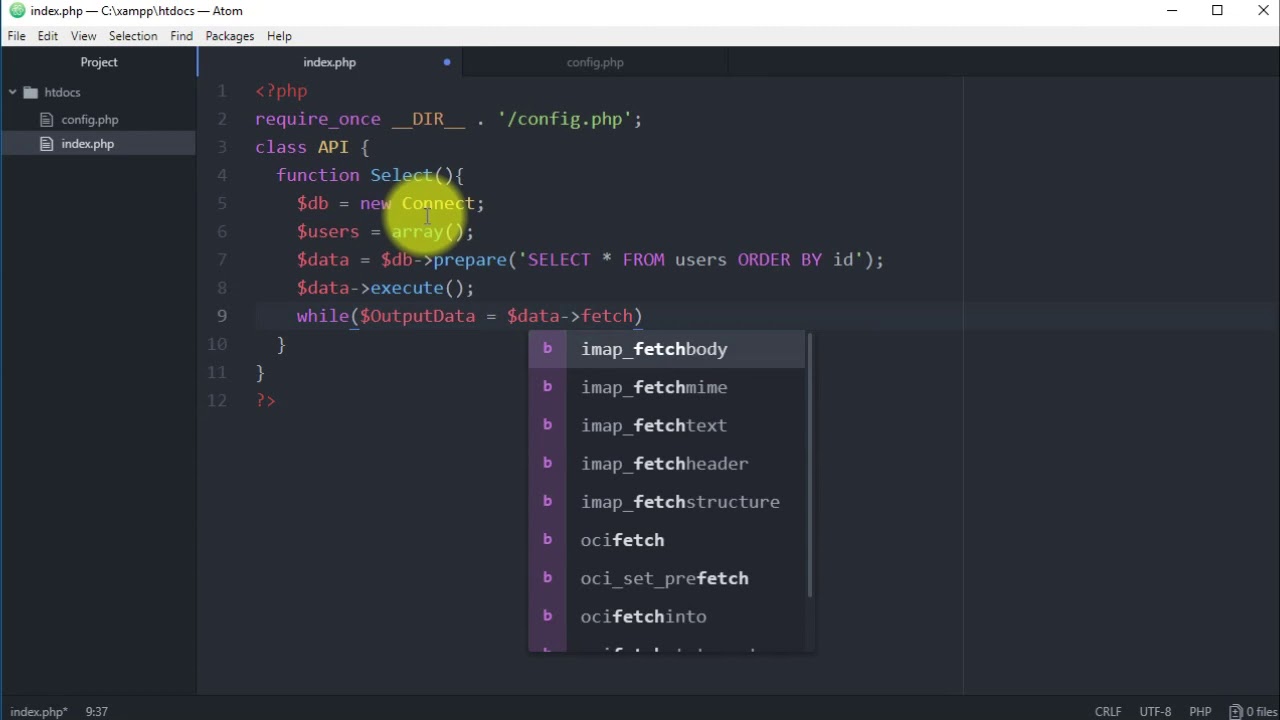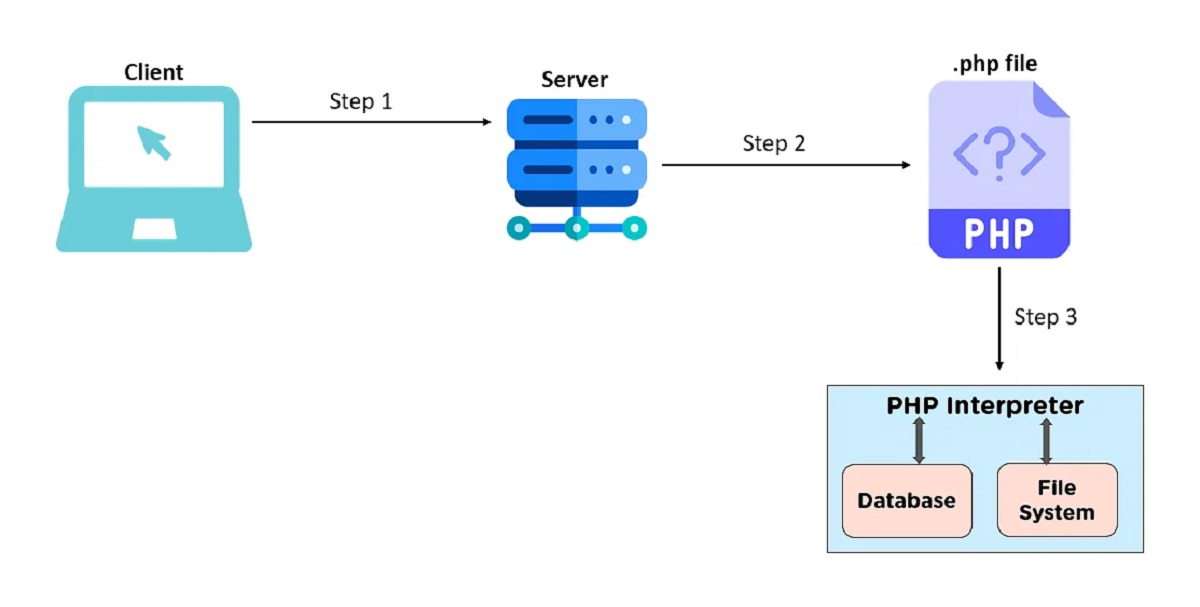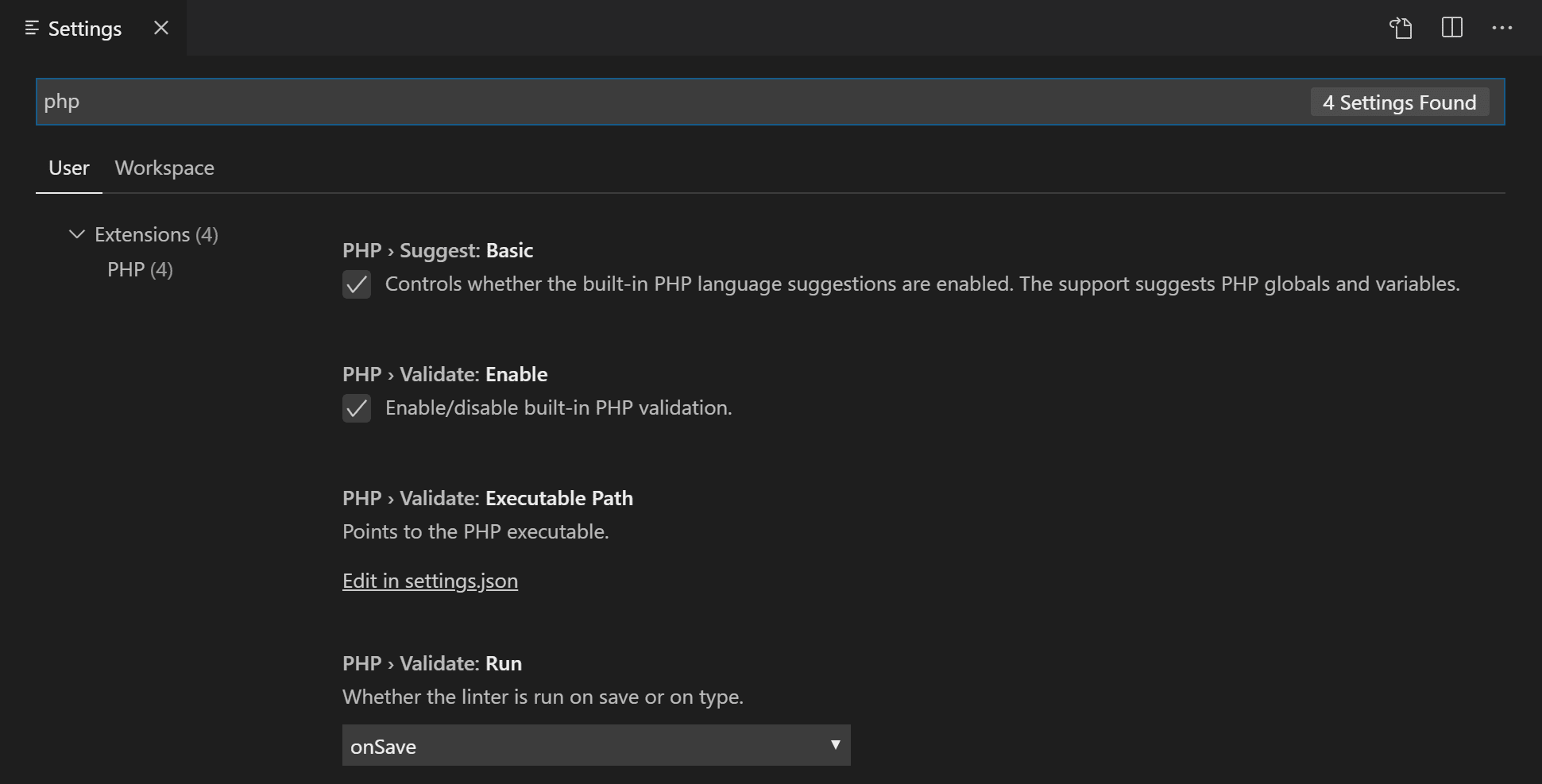Introduction
Welcome to the world of coding frameworks! If you’re a developer or someone interested in web development, you’ve probably heard the term “coding framework” thrown around. But what exactly is a coding framework and why is it so important?
A coding framework can be defined as a pre-established and structured set of tools, libraries, and conventions that provides a foundation for building web applications. It acts as a blueprint or a template that helps developers organize, streamline, and simplify the development process.
Coding frameworks are designed to provide a structure for developers to work within and reduce the need to reinvent the wheel with every project. They offer a predefined set of rules, guidelines, and reusable components that can be used to accelerate development time and improve code quality.
Imagine you’re building a house. Instead of starting from scratch and designing the entire structure, framework allows you to start with a solid foundation, walls, and essential components already in place. This allows you to focus on the unique and specific aspects of your project, rather than spending time on generic tasks.
These days, there’s a myriad of coding frameworks available, each tailored to specific needs and preferences. Some are specific to certain programming languages, while others are more generic and versatile. The choice of framework depends on factors like the complexity of the project, your technical expertise, and the scalability requirements.
In this article, we’ll explore the ins and outs of coding frameworks. We’ll discuss the reasons why we use coding frameworks, the common features they offer, the different types available, and how to choose the right framework for your project. Additionally, we’ll delve into the pros and cons of using coding frameworks, and highlight some of the most popular frameworks used by developers today.
By the end of this article, you’ll have a better understanding of coding frameworks and how they can revolutionize your development process. So, let’s dive in and explore the exciting world of coding frameworks!
What Is a Coding Framework?
A coding framework is essentially a pre-established and structured set of tools, libraries, and conventions that provide a foundation for building web applications. It serves as a blueprint or template that helps developers organize, streamline, and simplify the development process.
Think of a coding framework as a scaffolding that provides a solid structure for your code. It offers a set of rules and guidelines that dictate how your code should be structured and organized. This helps ensure consistency and maintainability, making it easier for other developers to understand and work on the project.
Coding frameworks often come equipped with a wide range of features and utilities that help with common tasks in web development. These features can include things like database management, user authentication, routing, and handling HTTP requests. By providing these functionalities out-of-the-box, frameworks save developers time and effort by eliminating the need to build these features from scratch.
One of the primary advantages of using a coding framework is that it promotes code reusability. Frameworks typically include a collection of pre-built components and modules that can be easily reused across multiple projects. This not only saves time, but also ensures consistency and standardization across different applications.
Furthermore, coding frameworks provide a structure that encourages best practices and enforces standards. They often follow established design patterns, such as Model-View-Controller (MVC), which help keep code organized, maintainable, and scalable. By adhering to these patterns, developers can create code that is easier to test, debug, and maintain.
Coding frameworks can be language-specific or language-agnostic. Some frameworks are specifically designed for a particular programming language, such as Ruby on Rails for Ruby or Laravel for PHP. These language-specific frameworks enable developers to take advantage of the language’s unique features and syntax, providing a more streamlined development experience.
On the other hand, there are also language-agnostic frameworks that can be used with multiple programming languages. These frameworks, such as Angular and React, are popular in front-end web development and allow developers to build interactive and dynamic user interfaces across different platforms.
In summary, a coding framework is a powerful tool that provides structure, organization, and a range of features for web application development. By leveraging the capabilities of a framework, developers can build applications more efficiently, with less repetition and greater code consistency.
Why Do We Use Coding Frameworks?
Coding frameworks have become an integral part of modern web development practices, and there are several reasons why developers choose to use them. Let’s explore some of the main benefits of using coding frameworks:
1. Efficiency and Productivity: Coding frameworks provide a foundation and structure that accelerates the development process. By using pre-built components and libraries, developers can avoid reinventing the wheel for common functionalities, reducing development time and effort. This allows developers to focus more on the unique aspects of the project and deliver results more efficiently.
2. Consistency and Maintainability: Frameworks come with established conventions and best practices, ensuring consistent coding standards across the project. In addition, frameworks encourage modular development and separation of concerns, making the code more maintainable and easier to understand. This is especially valuable when multiple developers are working on the same project, as it promotes collaboration and minimizes code conflicts.
3. Security: Many coding frameworks incorporate security features and practices by default, protecting applications from common vulnerabilities. These frameworks often have built-in mechanisms for handling input validation, data encryption, and protection against common security threats. By leveraging these security features, developers can enhance the overall security posture of their applications.
4. Community Support: Coding frameworks often have large and active communities of developers, providing a vast pool of resources, forums, and documentation. This community support allows developers to seek assistance, share knowledge, and learn from others’ experiences. It also means that frameworks are regularly updated and maintained, ensuring that they stay in sync with the latest industry standards and practices.
5. Scalability: Building scalable applications can be challenging, but coding frameworks provide tools and methodologies that facilitate scalability. With features like modular architecture, caching, and database abstraction layers, frameworks enable developers to build applications that can handle increased workloads and adapt to changing requirements without sacrificing performance.
6. Reusability and Flexibility: Coding frameworks promote code reusability, allowing developers to leverage pre-built components and modules for different projects. This saves time by eliminating the need to reinvent the wheel for common functionalities. Additionally, frameworks provide flexibility by offering customization options and the ability to extend their functionality through plugins and extensions.
Overall, coding frameworks bring convenience, efficiency, and standardization to the development process. They enable developers to build robust, scalable, and maintainable applications while saving time and effort. Whether you’re a seasoned developer or just getting started in web development, leveraging the power of a coding framework can greatly enhance your productivity and the quality of your applications.
Common Features of Coding Frameworks
Coding frameworks come equipped with a wide range of features and utilities that help developers streamline the development process and build robust applications. While the specific features may vary between different frameworks, there are some common features that are often found in most coding frameworks:
1. Routing: Routing is a fundamental feature in coding frameworks that allows developers to define the URLs and routes for different pages or endpoints in their application. It enables the framework to handle incoming requests and map them to the appropriate function or controller. By providing a consistent and structured way to handle navigation and request handling, routing simplifies the process of building web applications.
2. Templating: Templating is a feature that enables the separation of HTML markup and dynamic data in coding frameworks. It allows developers to define templates with placeholders for dynamic content, which can be populated with data from the server or user input. Templating enhances code readability, simplifies maintenance, and enables the reuse of layout structures across different pages.
3. Database Abstraction: Most coding frameworks come with built-in tools or libraries that provide an abstraction layer for interacting with databases. This allows developers to perform database operations such as querying, inserting, updating, and deleting records without having to write low-level SQL code. Database abstraction makes database interactions more secure, maintainable, and portable across different database systems.
4. Form Handling and Validation: Frameworks often provide features and utilities for handling form submissions and validating user input. These features help developers ensure that the data submitted by users meets the required format and criteria before processing it. Form handling and validation not only enhance the user experience by providing immediate feedback on input errors but also contribute to the security and integrity of the application.
5. Security Measures: Security is a critical aspect of web development, and many coding frameworks incorporate security features to protect applications against common vulnerabilities. These features may include tools for input validation, CSRF (Cross-Site Request Forgery) protection, XSS (Cross-Site Scripting) prevention, and authentication/authorization mechanisms. By leveraging these built-in security measures, developers can enhance the overall security of their applications.
6. Caching: Caching is a technique used to improve the performance and speed of web applications. Many coding frameworks provide built-in mechanisms for caching commonly accessed data or rendering parts of the application. By caching data or rendered HTML, the framework can serve subsequent requests faster and reduce the load on the server, resulting in improved performance and user experience.
7. Error Handling and Logging: Coding frameworks often incorporate features for handling errors and logging application events. These features help developers identify and diagnose issues during development and production stages. By providing customizable error pages, logging error details, and sending notifications, error handling and logging contribute to the stability and maintainability of the application.
These are just a few examples of the common features found in coding frameworks. However, it’s important to note that the specific features and functionalities may vary depending on the framework and its intended purpose. Regardless of the specific features, coding frameworks aim to provide developers with a robust and efficient toolkit to build high-quality web applications.
Types of Coding Frameworks
Coding frameworks come in various types, each catering to different programming languages, development needs, and project requirements. Let’s explore some of the common types of coding frameworks:
1. Backend Frameworks: Backend frameworks are designed to facilitate server-side development and handle the logic and processing behind the scenes. These frameworks are typically written in languages like PHP, Ruby, Python, or Java. Examples of popular backend frameworks include Ruby on Rails, Django, Laravel, and Express.
2. Frontend Frameworks: Frontend frameworks focus on building user interfaces and handling client-side interactions. These frameworks are usually based on JavaScript and provide libraries and tools to create interactive and dynamic interfaces. Some well-known frontend frameworks include Angular, React, and Vue.js.
3. Full-Stack Frameworks: Full-stack frameworks aim to provide a complete solution for both server-side and client-side development. They include features for backend and frontend development, offering a seamless integration between the two. Examples of full-stack frameworks include Laravel, Meteor, and MEAN stack (MongoDB, Express.js, Angular, Node.js).
4. Hybrid Mobile App Frameworks: Hybrid mobile app frameworks allow developers to build mobile applications that can run on multiple platforms, such as iOS and Android, using a single codebase. These frameworks utilize web technologies like HTML, CSS, and JavaScript to create mobile apps. Some popular hybrid mobile app frameworks include React Native, Ionic, and Flutter.
5. Content Management System (CMS) Frameworks: CMS frameworks are designed to facilitate the creation and management of website content without extensive coding. These frameworks provide a user-friendly interface for managing and updating website content, making them ideal for non-technical users. Examples of CMS frameworks include WordPress, Drupal, and Joomla.
6. Microframeworks: Microframeworks are minimalistic frameworks that focus on providing the necessary tools and features for small-scale web applications or APIs. They prioritize simplicity and minimalism, offering only the essential functionalities for a lightweight development experience. Popular microframeworks include Flask (Python) and Sinatra (Ruby).
7. Testing Frameworks: Testing frameworks facilitate the testing process by providing tools and libraries for automated testing of code. These frameworks offer functionalities for writing and executing unit tests, integration tests, and functional tests. Examples of testing frameworks include PHPUnit for PHP, Jest for JavaScript, and PyTest for Python.
These are just a few examples of the types of coding frameworks available. It’s important to note that the choice of framework depends on the programming language, development requirements, and personal preferences. Determining the right type of framework for your project can significantly impact the development process and the success of your application.
Choosing the Right Coding Framework for Your Project
Choosing the right coding framework for your project is crucial as it can significantly impact the development process, code quality, and overall success of your application. Here are some factors to consider when selecting a coding framework:
1. Project Requirements: Assess the specific requirements of your project. Consider the functionalities, scalability, and performance requirements. Determine if you need a frontend, backend, or full-stack framework based on the scope and complexity of your project.
2. Programming Language: Identify the programming language you are proficient in or prefer to work with. Different coding frameworks are built for specific languages, so choose a framework that is compatible with your chosen language.
3. Community Support: Look for frameworks that have active communities and a strong support system. These communities provide resources, tutorials, documentation, and forums where you can seek help from other developers. Active communities also ensure that the framework is regularly updated and maintained.
4. Learning Curve: Consider your proficiency and familiarity with the framework. If you are new to web development or have limited experience, opt for a framework with a gentle learning curve and comprehensive documentation to help you get started.
5. Performance: Evaluate the performance aspects of the framework. Look for benchmarks, performance metrics, and testimonials from other developers to ensure that the framework can handle the expected workload and deliver optimal performance.
6. Ecosystem and Plugins: Assess the availability of third-party plugins, extensions, and libraries for the framework. Check if they align with your project’s requirements. A well-established ecosystem and a wide range of plugins can make development smoother and faster.
7. Security: Consider the security features offered by the framework, such as built-in protection against common vulnerabilities, input validation, and encryption. Prioritize frameworks that prioritize security and have a track record of addressing security concerns promptly.
8. Documentation: Ensure that the framework has thorough and up-to-date documentation. Comprehensive documentation makes it easier for developers to understand and utilize the framework’s features and functionalities, saving time and effort in the long run.
9. Longevity: Evaluate the longevity and stability of the framework. Look for frameworks that have been around for some time, have a strong user base, and are actively maintained. This reduces the risk of the framework becoming abandoned or losing support in the future.
10. Compatibility with Existing Systems: If you have existing systems or libraries that you want to integrate with the framework, ensure that they are compatible. Compatibility issues can cause delays and require additional development work.
By considering these factors, you can make an informed decision when choosing the right coding framework for your project. Remember to strike a balance between the framework’s features, your familiarity with the technology, and the project’s requirements to ensure a successful development journey.
Pros and Cons of Using a Coding Framework
Using a coding framework in web development comes with its own set of advantages and disadvantages. Understanding the pros and cons can help you make an informed decision about whether to leverage a framework for your project. Let’s explore some of the key pros and cons:
Pros:
1. Efficiency and Productivity: Coding frameworks provide a structured and organized approach to development, offering pre-built components and libraries that can save significant development time and effort. This enhances overall efficiency and productivity, allowing developers to focus on the unique aspects of their project.
2. Consistency and Maintainability: Frameworks enforce coding standards and best practices, leading to consistent code organization and maintainability. With predefined conventions, new team members can quickly understand and work on the codebase, reducing onboarding time and promoting collaboration.
3. Reusability: Frameworks often include reusable components and modules that can be leveraged across multiple projects. This saves time and effort by eliminating the need to reinvent the wheel for common functionalities, promoting code reuse and standardization.
4. Ecosystem and Community Support: Many coding frameworks have thriving communities and ecosystems. This provides access to a wealth of resources, forums, and plugins, enriching the development experience. Active communities ensure that the framework remains up to date and well-maintained.
5. Security: Coding frameworks often incorporate built-in security features and practices to protect applications from common vulnerabilities. These security measures, such as input validation and authentication mechanisms, help safeguard against potential security threats.
Cons:
1. Learning Curve: Adopting a coding framework typically involves a learning curve, especially if you are new to the framework or have limited experience in the language it is based on. The need to familiarize yourself with the framework’s conventions and structure may result in a temporary decrease in productivity.
2. Framework Limitations: Coding frameworks have specific architectural patterns and limitations that may not align with the requirements of every project. In some cases, this can lead to constraints and compromises in customization or functionality.
3. Performance Overhead: While coding frameworks provide conveniences, they may introduce a slight performance overhead compared to building a solution from scratch. This overhead is generally negligible but may cause concerns in applications where high-performance is critical.
4. Dependencies and Version Compatibility: Frameworks often rely on dependencies and libraries, which can create compatibility and versioning issues. Keeping track of dependencies and ensuring compatibility with future updates may require additional effort.
5. Over-Engineering: The abundance of features and functionalities in coding frameworks can sometimes lead to over-engineering. Developers may be tempted to use complex solutions when simpler approaches would suffice, resulting in unnecessarily complex code and potential performance issues.
It’s important to evaluate the pros and cons in the context of your specific project requirements and development team’s skills. While coding frameworks can significantly accelerate development and improve code quality, they may not be suitable for every project. Carefully assess the trade-offs and choose a coding framework that aligns with your project’s needs and goals.
Popular Coding Frameworks
There is a wide range of coding frameworks available, each with its own set of features and advantages. Let’s take a look at some of the most popular coding frameworks used by developers:
1. Ruby on Rails (RoR): Ruby on Rails, often referred to as Rails, is a popular full-stack web development framework written in Ruby. It follows the Model-View-Controller (MVC) architectural pattern and emphasizes convention over configuration. Rails is known for its simplicity, efficiency, and extensive library known as “gems,” which allows developers to quickly add functionality to their applications.
2. Laravel: Laravel is a powerful PHP framework that follows the MVC pattern. It offers a robust feature set, including authentication, routing, caching, and database abstraction. Laravel’s elegant syntax and intuitive design make it a preferred choice for developers looking to build scalable and maintainable applications.
3. Django: Django is a high-level Python web framework that follows the MVC architectural pattern. Known for its “batteries included” philosophy, Django simplifies web development by providing many pre-built components and tools. It emphasizes security, scalability, and rapid development, making it a popular choice for building complex web applications.
4. Angular: Angular is a powerful frontend framework developed and maintained by Google. It enables developers to build dynamic and robust single-page applications (SPAs). Angular follows the component-based architecture, making it easy to create reusable UI components. It also offers features like two-way data binding, dependency injection, and extensive tooling support.
5. React: React is a JavaScript library for building user interfaces, primarily for single-page applications. It follows the component-based architecture and uses a virtual DOM for efficient rendering. React’s popularity stems from its simplicity, performance, and the ability to create reusable UI components. It is widely adopted by developers and used in combination with other libraries or frameworks.
6. Express.js: Express.js is a minimalistic and flexible web application framework for Node.js. It provides a simple and unopinionated approach to building web servers and APIs. With its lightweight design and rich ecosystem, Express.js is highly suitable for building microservices and RESTful APIs.
7. WordPress: WordPress is a content management system (CMS) that simplifies website creation and management. It offers a user-friendly interface, a vast library of themes and plugins, and extensive customization capabilities. WordPress is widely used for creating websites, blogs, and e-commerce platforms.
8. Spring Boot: Spring Boot is an enterprise-level Java framework that simplifies Java application development by providing opinionated defaults and auto-configuration. It streamlines the setup and configuration process, allowing developers to focus on writing business logic. Spring Boot offers extensive features, including dependency injection, security, and database integration.
These are just a few examples of popular coding frameworks, and there are many others available for different programming languages and purposes. The choice of framework depends on factors such as project requirements, development team expertise, and personal preference. It’s essential to carefully evaluate the features, documentation, community support, and scalability of the framework before making a decision.
Conclusion
Coding frameworks have revolutionized the way web applications are developed, providing a structured approach, time-saving components, and numerous features. They offer a range of benefits, including increased efficiency, code reusability, scalability, and security enhancements. By leveraging coding frameworks, developers can streamline the development process, improve code quality, and build robust, scalable applications.
However, it’s crucial to consider the specific requirements of your project and the trade-offs that come with using a framework. Factors such as the learning curve, framework limitations, and potential performance overhead should be carefully evaluated before making a decision. Choosing the right coding framework requires a thorough understanding of your project’s goals, technical requirements, and the skills of your development team.
Whether you opt for popular frameworks like Ruby on Rails, Laravel, or Angular, or choose more specialized frameworks like Django or Express.js, selecting the right framework can significantly impact the success of your project. Frameworks provide a solid foundation, standardized conventions, and a vibrant community of developers offering support and resources.
Remember, coding frameworks are tools. They are designed to assist developers in building applications more efficiently, but they are not a one-size-fits-all solution. It’s essential to strike a balance between leveraging the capabilities of the framework and tailoring it to meet your specific project requirements.
In conclusion, coding frameworks have transformed the way developers approach web application development, offering a range of benefits and streamlined processes. By selecting the right framework and utilizing its features effectively, developers can save time, improve code quality, and focus more on the unique aspects of their projects. With a plethora of frameworks available, it’s crucial to conduct thorough research, consider the pros and cons, and make an informed decision based on the specific needs of your project.









